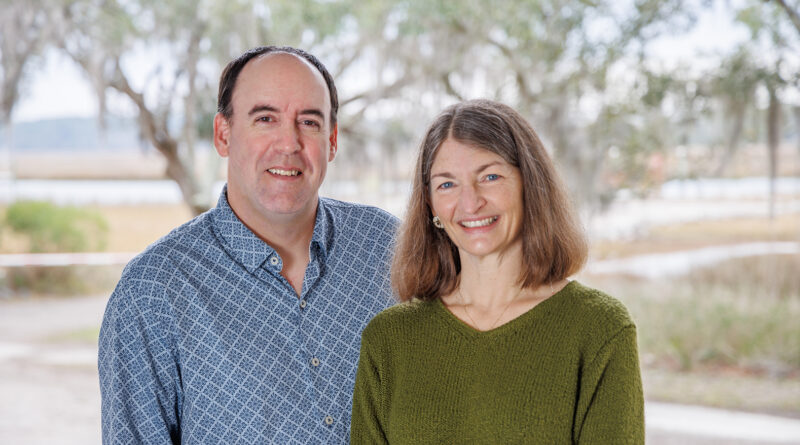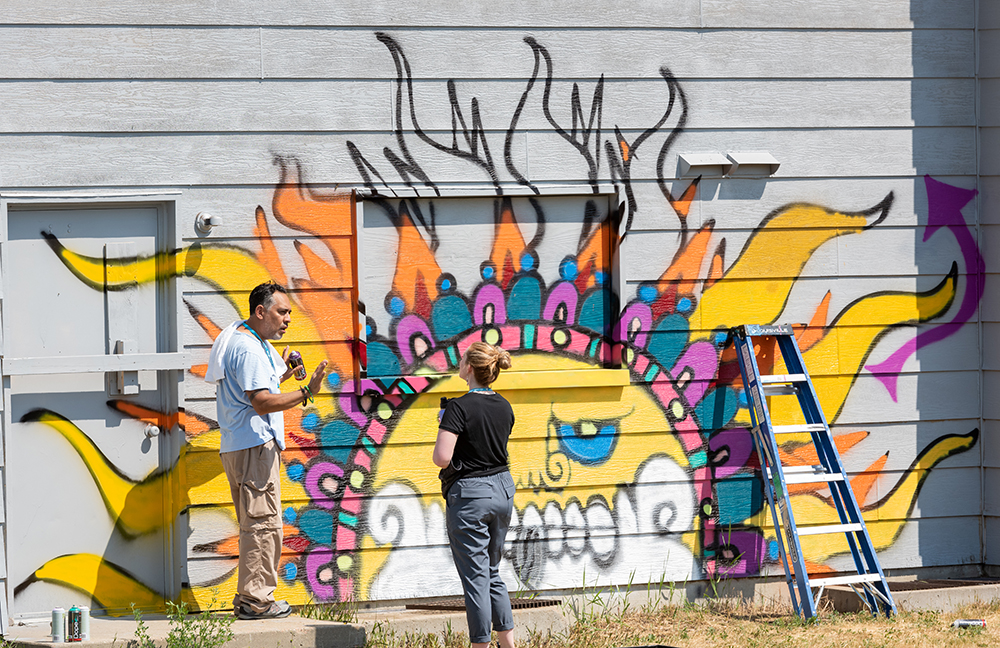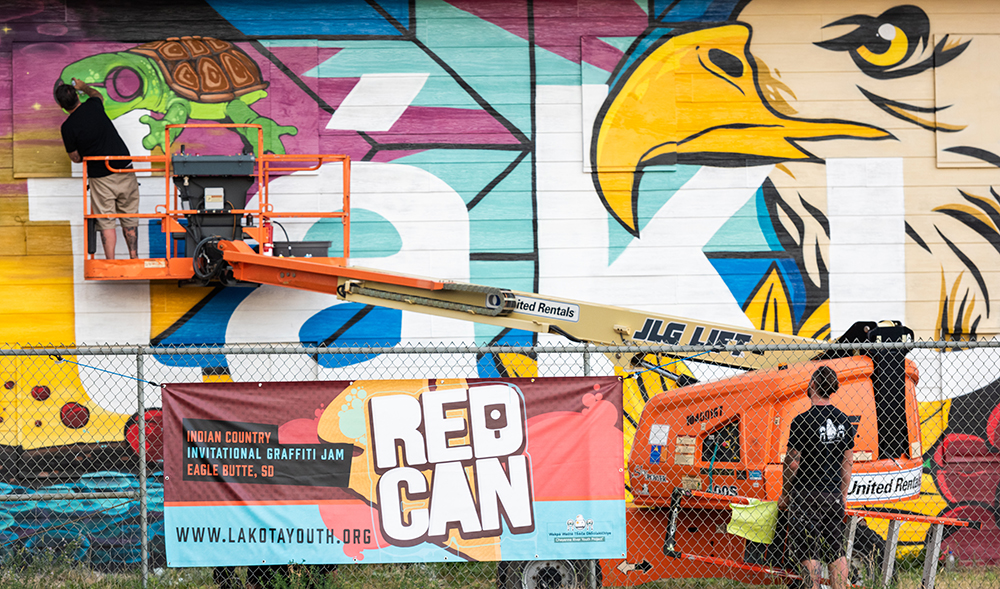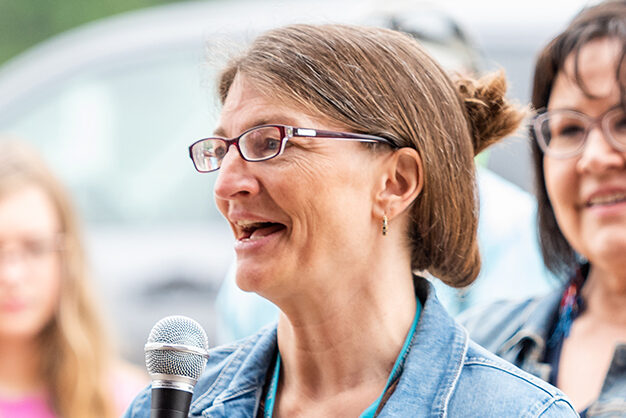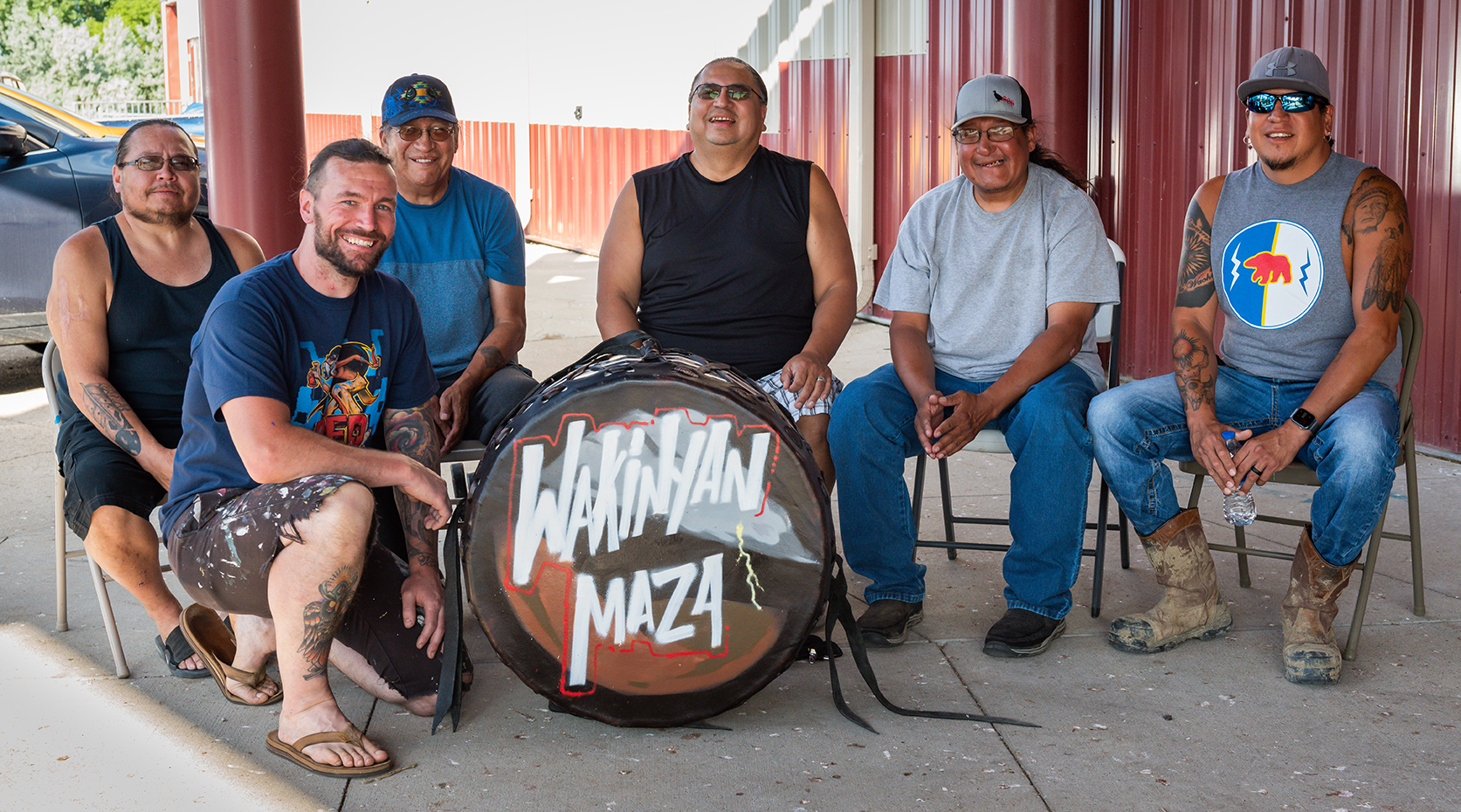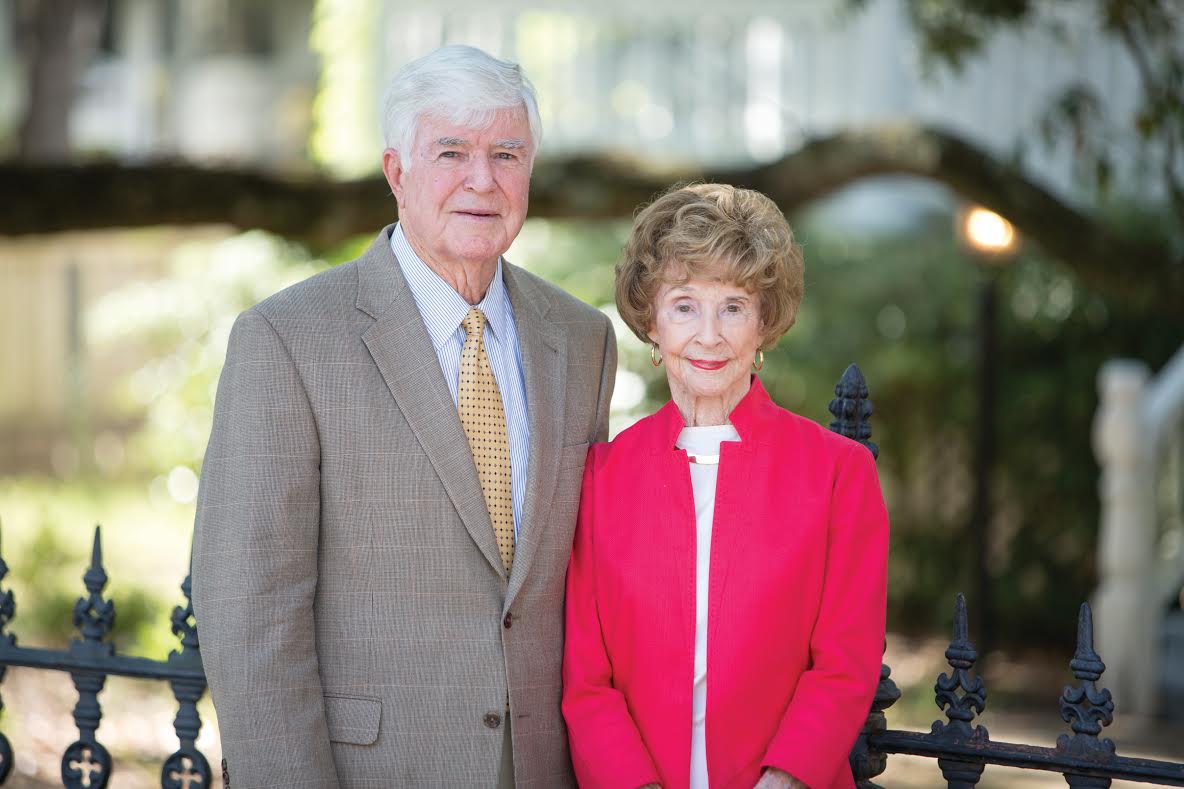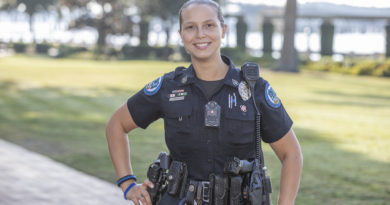RICHARD AND HEATHER STEINBERGER
Creating Conscious Art
story by JENNIFER BROWN-CARPENTER photos by PAUL NURNBERG
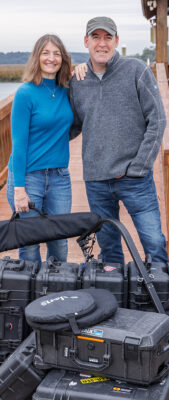 Merriam-Webster defines art as “the conscious use of skill and creative imagination, especially in the production of aesthetic objects.” That word, conscious, sticks out when thinking of creating something. It does not just happen. You do not wake up one day and find that you have written the next great American novel in your sleep or have painted a mural in your home without realizing you are doing it. It is a conscious use of skill. Some people may have more of this particular skill than others. Writers, painters, poets, photographers, and filmmakers; we are surrounded by artists daily. But where does that conscious use arise from? What makes an artist start to create? What ideals or moments in time push someone to make something?
Merriam-Webster defines art as “the conscious use of skill and creative imagination, especially in the production of aesthetic objects.” That word, conscious, sticks out when thinking of creating something. It does not just happen. You do not wake up one day and find that you have written the next great American novel in your sleep or have painted a mural in your home without realizing you are doing it. It is a conscious use of skill. Some people may have more of this particular skill than others. Writers, painters, poets, photographers, and filmmakers; we are surrounded by artists daily. But where does that conscious use arise from? What makes an artist start to create? What ideals or moments in time push someone to make something?
Heather Steinberger was born and raised in Wisconsin. She attended the University of Wisconsin-Madison, graduating with a journalism degree. Heather always knew she wanted to be a writer. After graduating, she went to work in the advertising agency business for a while. It allowed her some experience right out of college while working to find her next steps. She went on to work as an editor for magazines, including Sailing in Port Washington, Wisconsin, and Sport Diver in Orlando, Florida.
In 2004, Heather had built enough experience and connections that she felt ready to go out independently and build her own business. She has been an independent writer ever since, writing for various magazines and doing public relations work. Running her own business has also allowed her to focus on nonprofit initiatives, which led her to the Cheyenne River Youth Project.
Richard Steinberger grew up in Eschweiler, Germany. He moved to the United States when he was 17, attending high school for a year in Huntington, West Virginia. He spent that year working to learn English, so he would be ready to attend college; he went on to study photography at Daytona State College in Daytona Beach, Florida. When he was finished with school, he started assisting a few photographers in the Orlando area, eventually taking a full-time assistant job with a photographer who specialized in boats and yachts. In 2002, Richard decided it was time for him to start working on his own. He has been running his own photography business since then, primarily shooting for boat brands, like Sea Ray, Boston Whaler, and Chris-Craft, as well as hotels, resorts, and residential architecture.
Richard and Heather met in the early 2000s while working on a photoshoot for the same client. Their paths kept crossing professionally, and “the rest is history,” as Heather says. Following their interests, they moved to Sturgeon Bay, Wisconsin, in 2002; to Bailey, Colorado, in 2011; and finally to Beaufort in 2020.
The Eagle Butte, South Dakota-based Cheyenne River Youth Project (CRYP), a Native-led nonprofit organization serving Lakota youth on the Cheyenne River Sioux Reservation, came into their lives in 2006. Heather first learned about CRYP because her sister volunteered with them in the 1990s while she was in college. Heather was inspired by everything her sister shared with her about the beauty of the Lakota community. When her sister took a yearlong position on the reservation in 2000, Heather visited her there. Then, in 2006, she volunteered at CRYP herself, helping run “The Main” youth center for 4- to 12-year-olds during the summer. Heather says that summer proved to be life-changing.
Executive Director Julie Garreau is an enrolled member of the Cheyenne River Sioux Tribe and has been leading CRYP since it opened its doors in 1988. After Heather’s summer of volunteering, Julie told her they could use her communications background to help them with CRYP. Today, more than 17 years later, Heather continues to handle communications for the youth project.
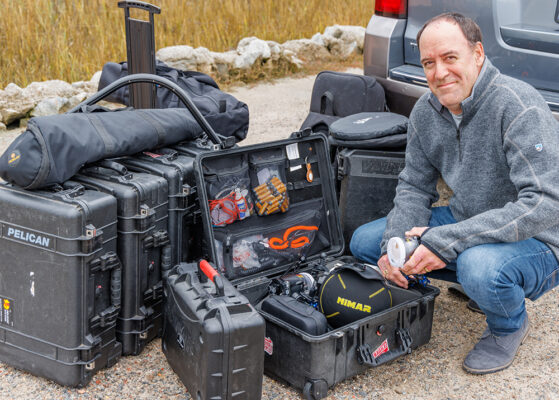
The Cheyenne River Youth Project is dedicated to giving Lakota youth and their families access to the culturally relevant, enriching, and enduring opportunities needed to build strong, healthier communities and a more vibrant future together. Through its arts and culture programming, and the signature RedCan invitational graffiti jam, the youth project is also giving the next generation of Lakota youth new opportunities to express themselves. As Julie Garreau says, “There is no word in Lakota for ‘art.’ Art is culture, and culture is art.”
In 2021, CRYP needed someone to do still photography and video for RedCan, an annual event that began in 2015. Richard volunteered to do the photography and videography for the event, but he wanted to take it a step further and film an actual documentary. Julie agreed right away.
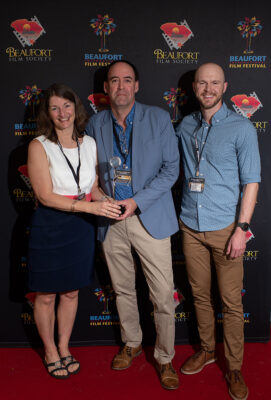
Humanitarian Award at BIFF 2023
photo by SUSAN DELOACH
Richard got in touch with two colleagues, Joseph Gamble and Drew Bennett, and they joined Richard and Heather at RedCan in July 2021. The goal behind the project was to tell the larger picture story behind the Cheyenne River Youth Project through the lens of RedCan.
As they started doing their many hours of interviews, they realized that the story was much bigger than that. It was about the transformative power of art in a community that is suffering from intergenerational trauma, how art can heal youth, strengthening connections in a culture, and so much more.
“It turned into a much bigger project than we ever could have anticipated,” Richard says. “The result is ‘Waniyetu Wowapi (Winter Count).’”
They spent four days filming during RedCan, and Richard returned in the fall for some additional filming, leaving them with countless hours of footage and interviews with more than 20 different people. “Trying to carve a story out of all that footage and turn it into a 35-minute film was interesting. There were tears,” Heather says, laughing.
While most films have large production teams, “Waniyetu Wowapi” had a crew of four on-site in Eagle Butte and then two (Richard and Heather) running post-production. It was an eye-opening experience for both of them.
Joseph Gamble, their colleague who was part of the film crew, recommended that they give film festivals a try. They started doing some research and knew that if they could, they would want it to be screened in their adopted hometown of Beaufort.
“Waniyetu Wowapi (Winter Count)” was accepted into the 2023 Beaufort International Film Festival, which thrilled Heather and Richard.
Not only was it accepted, but the film also won the Susan A.K. Shaffer Humanitarian Award. Susan’s legacy is one of inspiration, intellect, spirituality, and all things that are fulfilled at the Cheyenne River Youth Project through the work that Julie and so many others are doing. Richard and Heather were deeply grateful for the honor of receiving the award. It was a very emotional experience for both of them.
And so, art is conscious. And that could not be more clearly displayed than it is through the Cheyenne River Youth Project and the “Waniyetu Wowapi” film. Each day, the Lakota youth is being taught how to heal their intergenerational trauma through working with spray paint, acrylics, drawing, and more. As one person says in the film, “It’s not just about the art, it’s about becoming a more creative thinker. It teaches kids and adults to look at things from different perspectives while applying their voice to it.” It is not only healing them, it is teaching them to be proud of themselves, their family, and their tribe in a world that historically has tried to make them feel ashamed of those things. The Cheyenne River Youth Project sends the message that these children matter, and that is what will change their lives moving forward.
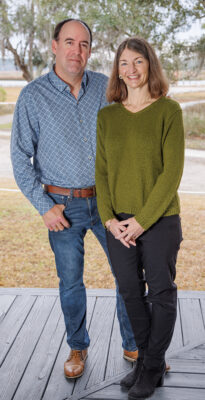 Richard and Heather do have future projects planned, including a concept for a second film. They can’t give away too much information yet, but Beaufort can expect more to come from the Steinbergers, providing additional insight into Lakota culture and communities. They also will produce a follow-up film with the Cheyenne River Youth Project when its new Waniyetu Wowapi Arts and Culture Center is complete. “And in the meantime, we have two businesses to run and an almost 15-year-old daughter to raise,” Heather says.
Richard and Heather do have future projects planned, including a concept for a second film. They can’t give away too much information yet, but Beaufort can expect more to come from the Steinbergers, providing additional insight into Lakota culture and communities. They also will produce a follow-up film with the Cheyenne River Youth Project when its new Waniyetu Wowapi Arts and Culture Center is complete. “And in the meantime, we have two businesses to run and an almost 15-year-old daughter to raise,” Heather says.
Richard and Heather hope that their work will raise awareness about the tight-knit and vibrant communities of Native Americans.
“We have 574 federally recognized tribes in this country,” Heather says. “Native people are still here, their cultures are incredibly rich, and they know what they need to do to heal their communities. They just need support, opportunities, and resources. There are so many ways to help.”
If you are interested in donating, volunteering, or just learning more about the work at CRYP, go to www.lakotayouth.org.
If you have not had the privilege of watching “Waniyetu Wowapi (Winter Count),” you can find the film at vimeo.com/LakotaYouth. Hopefully, it inspires you to learn more about Lakota people, the Cheyenne River Youth Project, and how you can be part of the work being done to heal, empower, and inspire the seventh generation.

